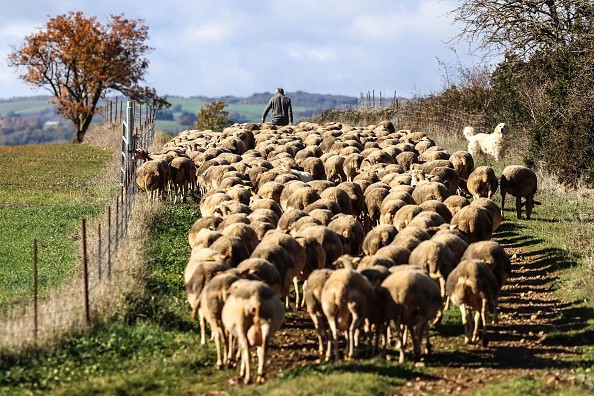One of these days' challenges is how to control the vegetation that grows under and around the solar arrays, which can reduce their efficiency and pose a fire hazard.
Traditionally, solar farm operators have used mowers, weed whackers, herbicides, or manual labor to keep the vegetation in check.
These techniques, meanwhile, may be pricy, intrusive, polluting, harmful to the soil and wildlife, etc. Because of this, some owners of solar farms are turning to sheep, a more eco-friendly and long-lasting option.
Sheep are great groundskeepers for solar farms

Sheep are ideal animals for grazing on solar farms because they are short enough to fit under the panels, they eat a variety of plants, including weeds, and they do not damage the wires or equipment, as per Phys.org.
Sheep also provide natural fertilizer for the soil, which can improve its health and carbon sequestration. By using sheep to maintain the vegetation, solar farm operators can save money, reduce their environmental impact, and support local farmers and ranchers who provide the sheep.
Sheep grazing can also create a more diverse and attractive landscape, which can benefit wildlife and pollinators.
In comparison to mowed or herbicide-treated areas, sheep grazing on solar farms can boost plant diversity by 90%, pollinator richness by 150%, and avian diversity by 120%, according to studies from Oregon State University and the University of California, Davis. The study also found that sheep grazing did not affect the performance or durability of the solar panels.
Sheep grazing on solar farms is a growing practice
Sheep grazing on solar farms is not a new idea, but it is becoming more widespread as the solar industry grows and seeks more sustainable ways of operating, as per ArsTechnica.
A nonprofit group that supports and promotes this technique, the American Solar Grazing Association (ASGA), estimates that roughly 900 acres of solar land are currently being used for sheep grazing in New York State alone. According to the ASGA, the US has around 2 million acres of potential solar grazing pasture.
Many solar farm operators have partnered with local farmers and ranchers who provide the sheep for grazing.
For example, White Oak Pastures, a sixth-generation homestead in Georgia that practices regenerative agriculture, has grazed 1,000 sheep on a 700-acre solar farm that powers a Facebook data center.
Cabriejo Ranch, a family-owned ranch in Missouri that raises grass-fed lamb, has grazed sheep on several solar farms across the country, including in Tennessee, Georgia, North Carolina, and Minnesota.
Pennsylvania State University Extension has conducted research and outreach on sheep grazing on solar farms in Pennsylvania, where there are about 300 megawatts of solar capacity installed.
Possibilities and difficulties with sheep grazing
A personalized grazing plan successfully enhances acreage and can let dedicate additional area to growing forage on the property for the winter, as per PennState Extension.
Additionally, shifting sheep to a solar array throughout all or part of the grazing season may assist with challenging parasite issues on domestic pastures.
Offering grazing services has its share of difficulties as well. One issue could be a lack of wintering area for the amount of sheep required to operate a solar farm. Under-grazing of the home farm's fenced acres is a different issue.
Driving time and distance are challenges, according to sheep owners working in the solar array grazing industry. It can also be difficult to invest in a trailer, handling equipment, watering equipment, and mineral feeders.
© 2026 NatureWorldNews.com All rights reserved. Do not reproduce without permission.





